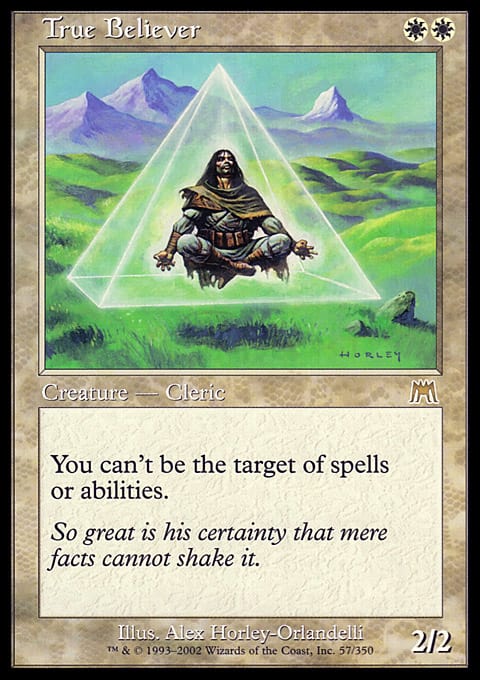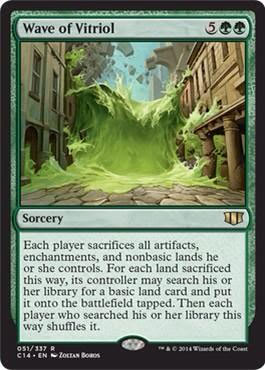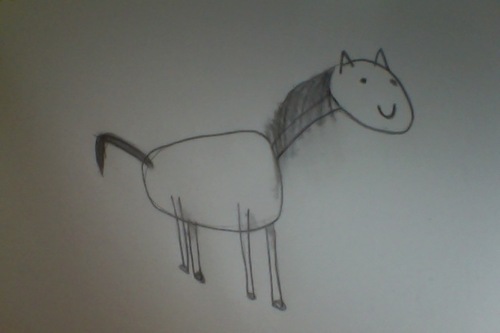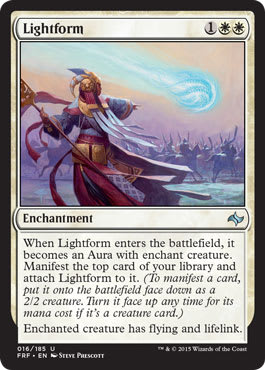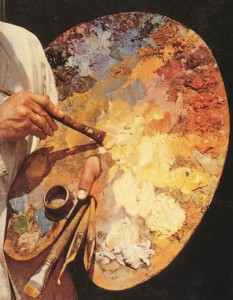This article will be in two parts. Part one is to explain what is commonly known as digital art making, and part two includes a few ways to tell digital paintings from traditional paintings.
So, What Is This Digital Business?
Terminology is often so interchangeable in the illustration field, and before I can show you what to look for, you must know what digital art even is! With any digital painting, drawing, or creation, you have only one tool: a stylus. You have this plastic pen that simulates any art-making tool you want. Sure, you could technically use a mouse, and only a program is needed, like Zbrush, Photoshop, or Painter, but a tablet like a Wacom, with a stylus, is generally accepted as what connotes a digital artist as relating to today's article.
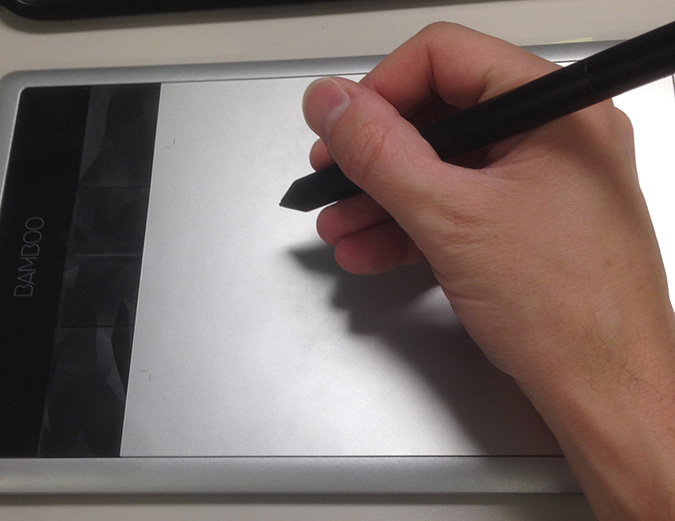
Issues arise in communities in considering digital art to be lesser. A whole mythology has emerged amid noise from fan communities that digital is too clean and the lines are too crisp. The tool allows more precise lines because traditional paintings don't need them; they're not desired or are often unnecessary. Hyperrealism can occur in both mediums, it's just radically easier to zoom in to a digital painting hundreds of times to create the perfect edge. That level of control forces artists to be more cognizant to make things blurred, rough, or less clear to have only the desired number of focal points.
This feeling that a new art form is lesser happens every few generations. Acrylic paint was mixed with plastic--imagine the horror of oil painters seeing a new medium. Watercolor paint, surprisingly enough, spun off the Royal Academy of Arts in London because they felt their medium wasn't taken seriously, wasn't held in high regard, and was underrepresented. They then made their own society, the Royal Watercolour Society. If you can't get respect, make your own club. It's like digital is doing just that and will continue to make art whether or not you like it.
What's the Same about Creating the Art
Every sketch, drawing, assignment, and commission creates the basis for a career in art. Both digital and traditional artists must understand how colors interact with each other, how to compose a scene, how to identify a light source, how to show perspective, and countless other examples of a strong set of fundamentals. No button or new brush set, or having full-spectrum lightbulbs, will change the art. What does matter is:
- Those life-drawing sessions.
- Nudes you had to paint.
- Those sketches at the museum.
- That moleskin full of warm up sketches.
- Examples number five to the ten thousandth hour.
All artists need to have strong bases, and in both cases, they both struggle to know when they're finally completed with a work. The basis is the same; the respect gained is cyclical each generation. That said, perhaps the vitriol is in the real differences . . .
What's Different about Creating the Art?
With traditional art, you have a different tool for everything. You have a fishing toolbox in college when you carry along every implement you might even remotely use, from ink and pencils to erasers and a variety of paintbrushes. You learn how to clean brushes, use turpentine, clean paint off your beard, and get it out of your hair and off your dog.
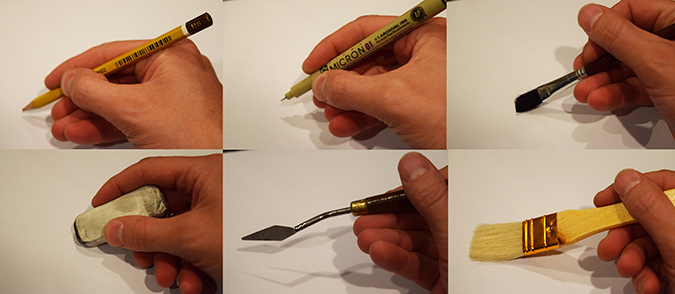
Digital has one tool, so sketching, drawing, and painting are all done at the same time--it's all in the same motion. Students struggle to start with digital creation because techniques are confused. Sometimes, they are painting when they should be drawing or blending when they should be painting layers.
Photoshop, despite being the industry's most pirated and used softball, is not really a strong brush engine for painting. That's what the program Painter is for. Photoshop struggles with opacity with pen pressure if on a Wacom. When you push harder, you should expect more paint, right? Well, that's not so clear cut when you have no tactile interference from a stylus on a piece of plastic--it all feels the same despite looking different. Different "brushes" do exist with sizing, scatting, and pen pressure differentiation, but you're still touching with your hand, the same thing over and over again. Painter has more of the texture changes that traditional painting has, like washes, mixing colors to a more exact science, and using wet on wet paint, which emulates painting closer. But Painter also struggles with editing. Photoshop allows the industry standard for editing an image, making layers blend, and controlling whether deviations are transparent. You have underlying colors you're testing in an area? You use Photoshop.
Digital Also Has the Magical Usage That Is One of Its Greatest Strengths and Also Weaknesses: the Undo Button
By being able to instantly fix mistakes, you never fix them within a painting. It's analysis paralysis when a face "just doesn't look right," and you rework and undo and redo countless times. Oil paint is forgiving, and you can rework. Digital painters don't rework--they never reach that stage. Though, regessoing a board to fix a mistake does take an enormous amount of time--worse, an art director may ask you to entirely rework an area.
Mastering tools is hard, as you can blur and smudge or change brushes in an instant, so you can have radically different textures next to each other, which takes a while to step back to look at. It's "too smooth" is this issue.
All colors are free, so valuing one more than other, to limiting a palette for mood, is less cognizant with digital painters--using black or gray instead of dark purple or dep blue. I've found myself working on pieces with over seventy layers, layer masks, paths, adjustment layers, and so on. Artists rarely, if ever, show you this. I begged Jason Rainville to show you his:
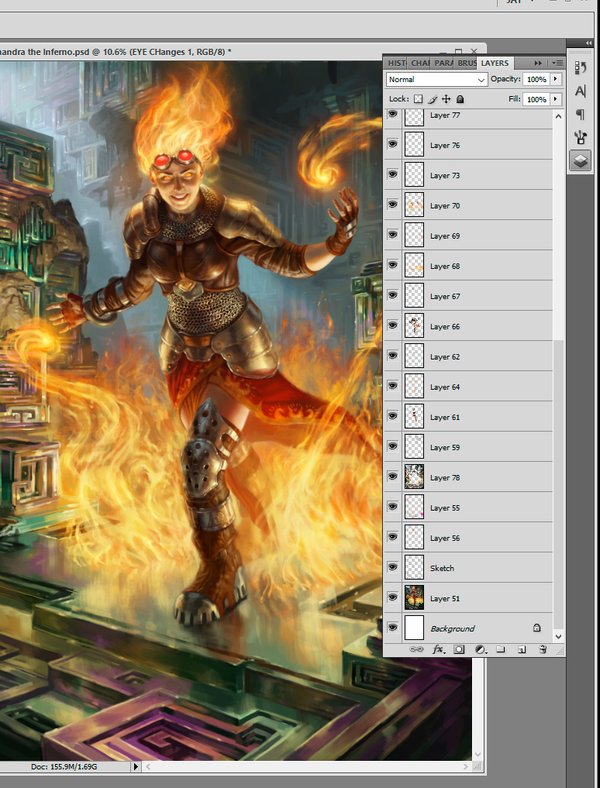
Image via Jason Rainville
Anyone can use digital or traditional mediums to create art. It takes skill to make something in a medium that people will recognize. Ask your friends to draw you a horse, and see what I mean. It'll look as awkward as below either way.
How to Tell if a Magic Artwork Is Digital
You Know the Artist is Digital
I suppose the first "trick" is a bit of a copout, but it is the fastest way. If you can't remember that Jason Chan is digital or Steve Prescott is always traditional, a handy list kept up to date at by friends at OriginalMagicArt.com lists the digital ones.
This isn't a failsafe method, as Seb McKinnon creates traditional sketches and color roughs, as does Will Murai. The traditional final is also imperfect, as a digital artist can switch at any time.
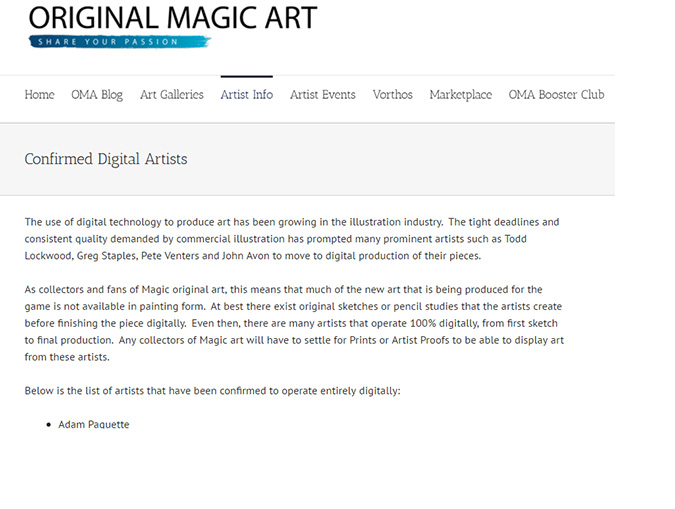
2. A Visual Inspection
You might think that all artists at Magic's level are masterful at every millimeter of their works, but often, a few telltale signs will remain with revisions. No, you won't see sloppy copy-and-pasting or extra limbs. Magic art isn't a magazine advertisement that can have sloppy airbrushing that Tumblr loves to post about.
Telltale tool marks -- Most digital tools have a much stronger visible trace compared to a traditional painting. If you use a cloning tool, you will see a repetition of pixels. Landscapes with blades of grass or sunflowers are pretty easy to pick out once you find some small square. You may see any halos around the image of any kind, from lens flares to brushstrokes that are horizontal in nature but uniform in opacity. Check the bottom left below for what I mean. It's not the main focal point, and that's okay! It's just part of the process.
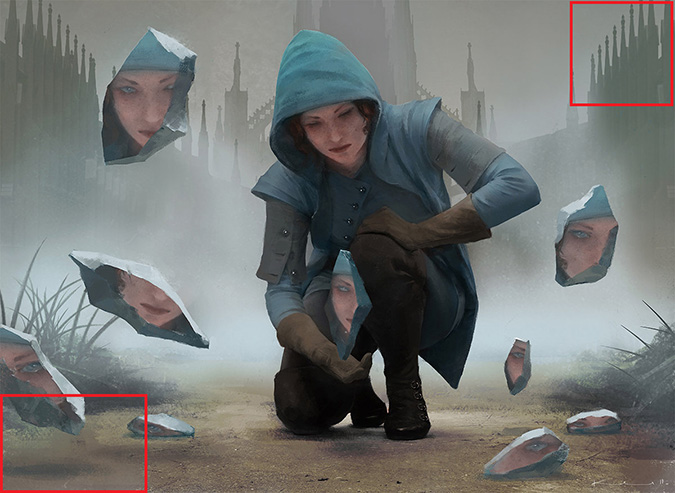
Infinite Reflection by Igor Kieryuk
Search shadows and reflections -- Identifying light sources comes from painting actual people from actual reference. Reflections and perspective lines often become a bit more irregular with digital tools because the original sketch can be disregarded so quickly! You can train yourself to find irregular shapes and lighting when you look at a few images in a new set. The big art reviews I do? It's basically eye training for me every few months. To find it yourself, flip images upside down. You start to see a lot more because your brain won't skim over details.
For example, notice the mist off the sword with the breaks in the mist? That's digital. It's harder to see right side up because you keep looking at the humans. When an artist is also Howard Lyon incredible, it's doubly hard to examine.
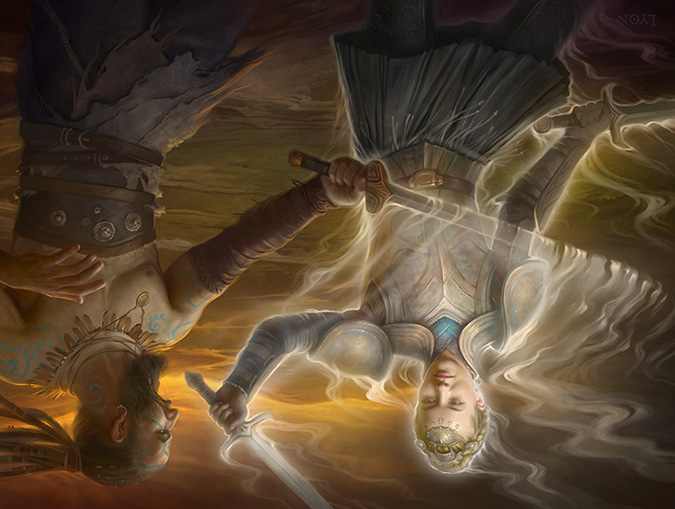
Enshrouding Mist by Howard Lyon
Edges -- When you zoom in to a higher-resolution digital image, due to card size being so impeccably small, edges become rather apparent. In both of the cases below, trying to traditionally pain such a stark edge on different colors and textures being so clean is possible. It's just incredibly difficult.
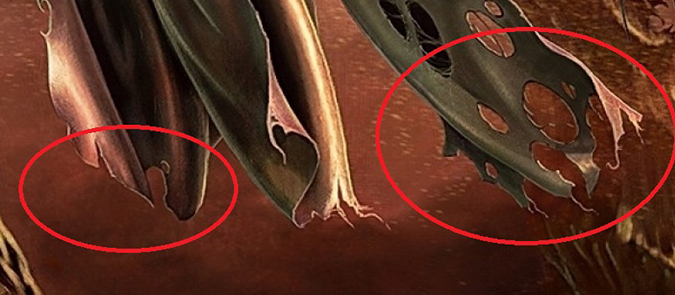
Crop of Glissa, the Traitor promo by Steve Arygle
Additionally, look at how uniform each of the arms is in ol' hundred hands here. The opacity levels could be easily dropped a few percentage points in Photoshop, looking like 100%, 90%, and 70%. In traditional painting, the actual color would often be shifted or looking more blurred or obscured for the same effect.
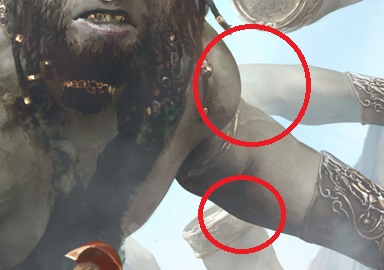
Hundred-Handed One by Brad Rigney
Palettes -- To see the overlapped technique Brad used in his digital artwork, see how Steve Prescott uses a limited palette to show background figures. Notice the painted colors? He doesn't have access to everything because paint isn't cheap and having a billion colors doesn't improve the scene. A digital artist limiting the color palette occurs, but again, it's rarer. Check the palette example to see what a limited number of colors looks like for a traditional painter.
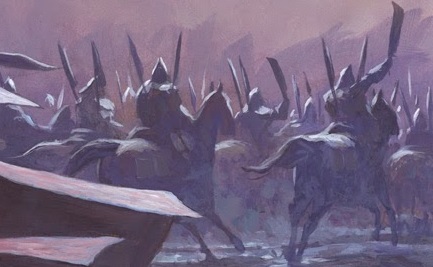
3. Ask a Vorthos
As always, if you're still unsure if something is digital, perhaps because you want to buy the original, ask a Vorthos online. I'm always available at @VorthosMike or you can easily find my e-mail via an internet search. Feel free to ask and look at some art!
Look at your art closer; 2016 will definitely have more digital artists dabbling in traditional painting due to the sales potential of the original. This means more artists will be asked about originals, and frankly, those who started an underpainting and finished digitally may go back and finish with a brush. I look forward to more variation in originals and hope to instill that digital or oil paint, the medium is secondary to quality. And we've never had better art.
-Mike















